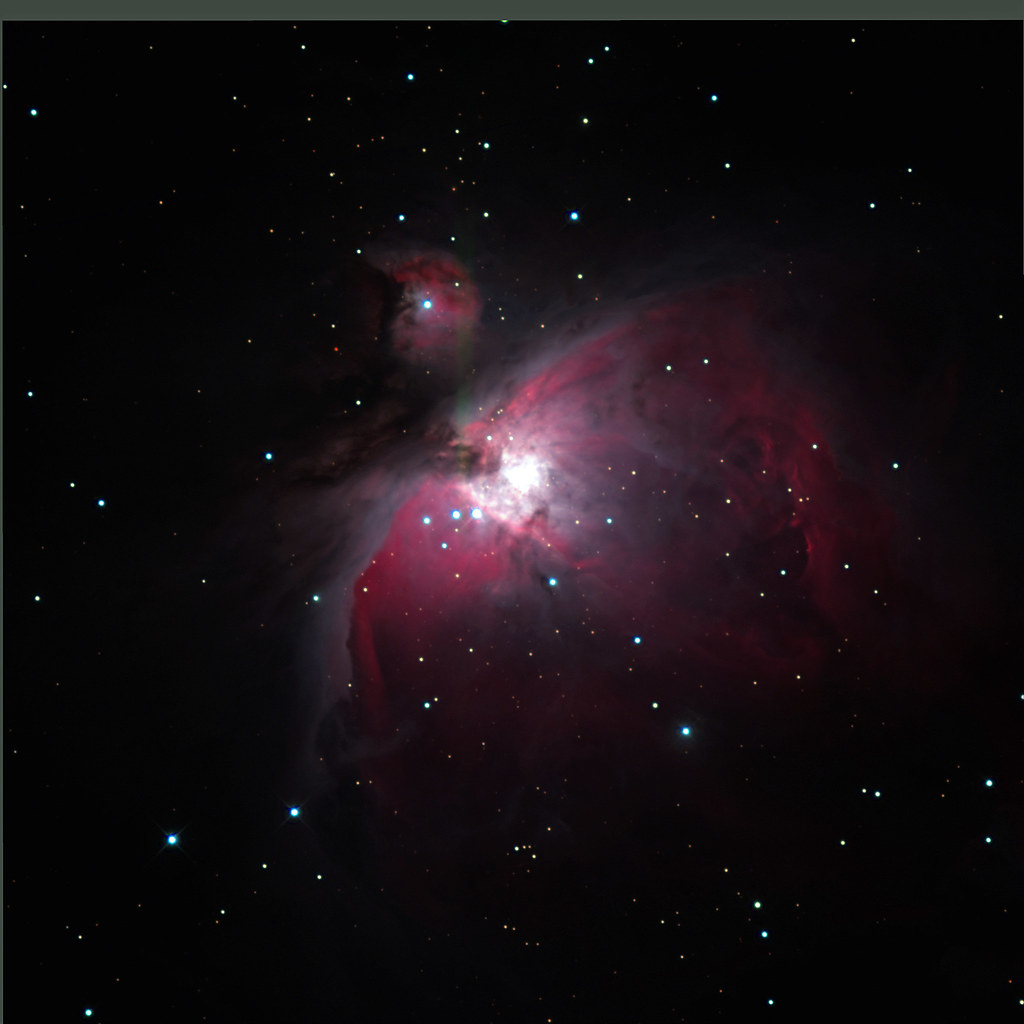Either long exposure (with the camera moving to prevent star tracks) or lots of shorter exposures all stacked together.
Or for the really good photos both.
The equipment needed to get the really amazing photos can be very expensive. You also have to find somewhere where there is really very little light pollution and inevitably the British weather will produce cloudy skies every time you find time to go out and take photos. The post processing of the images also takes a long time.
If you already have a good SLR and a range of lens with large apertures. Then you just need to invest in a tracking mount and sturdy tripod ~£300 – £500 and thats for a basic setup. But if starting from fresh it might be better to rent some time on a remote telescope and if you really enjoy it start investing in a system of your own.
Vinnyeh – nice picture, much better than my first attempt. I now have a 200mm F2.8 lens for my camera and going to try an other attempt at Orions Nebula this winter. If I can get similar results to the above I’ll be very happy.
